 W
WSecond Empire, in the United States and Canada, is an architectural style most popular between 1865 and 1900. Second Empire architecture developed from the redevelopment of Paris under Napoleon III's Second French Empire and looked to French Renaissance precedents. It was characterized by a mansard roof, elaborate ornament, and strong massing and was notably used for public buildings as well as commercial and residential design.
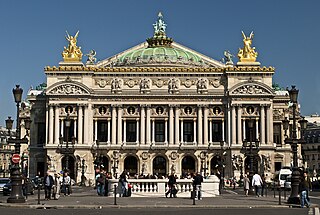 W
WThe Napoleon III style, also known as the Second Empire style, was a highly eclectic style of architecture and decorative arts, which used elements of many different historical styles, and also made innovative use of modern materials, such as iron frameworks and glass skylights. It flourished during the reign of Emperor Napoleon III in France (1852–1871) and had an important influence on architecture and decoration in the rest of Europe and the United States. Major examples of the style include the Opéra Garnier (1862–1871) in Paris by Charles Garnier, the Bibliothèque nationale de France, and the Church of Saint Augustine (1860–1871). The architectural style was closely connected with Haussmann's renovation of Paris carried out during the Second Empire; the new buildings, such as the Opéra, were intended as the focal points of the new boulevards.
 W
WSecond Empire architecture in Europe is an architectural style rooted in the 16th century Renaissance, which grew to its greatest popularity in Europe in the second half of the nineteenth century and early years of the twentieth century. As the style evolved from its origins, it acquired a mix of European styles, most notably the Baroque, often combined with mansard roofs and low, square based domes. It derived its name from the era of the Second French Empire.
 W
WThe Château de Baronville is located between Paris and Chartres in France near the town of Béville-le-Comte, Eure-et-Loir.
 W
WThe Bowes Museum has a nationally renowned art collection and is situated in the town of Barnard Castle, Teesdale, County Durham, England.
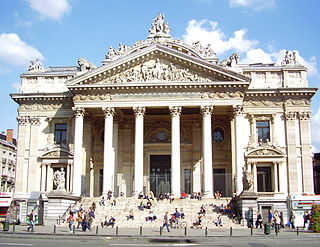 W
WThe Brussels Stock Exchange, abbreviated to BSE, was founded in Brussels, Belgium, by decree of Napoleon in 1801. In 2002, the BSE merged with the Amsterdam, Lisbon and Paris stock exchanges into Euronext N.V., renaming the BSE Euronext Brussels. The most well known stock market index on the BSE is the BEL20.
 W
WThe Buenos Aires Central Post Office building, now the Néstor Kirchner Cultural Centre, was the seat of the Correo Argentino until 2005. It is located in the San Nicolás, Buenos Aires neighborhood of Buenos Aires, Argentina.
 W
WThe Chilean National Museum of Fine Arts, located in Santiago, Chile, is one of the major centers for Chilean art and for broader South American art. Established in 1880, the organization is managed by the "Artistic Union".
 W
WThe Belmond Grand Hotel Europe, is a five-star hotel on Arts Square in Saint Petersburg, Russia.
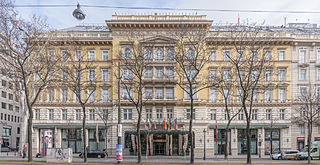 W
WThe Grand Hotel Wien is a five-star luxury hotel in Vienna, Austria. It is located on the Ringstraße at Kärntner Ring 9.
 W
WThe Hôtel de Paris Monte-Carlo is a hotel located in Monaco, It was opened in 1863 as part of the development of Monaco by the Société des Bains de Mer (SBM) under the auspices of Charles III of Monaco.
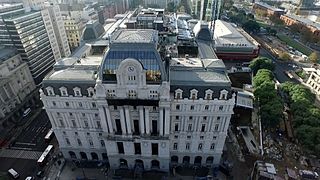 W
WThe Kirchner Cultural Centre is a cultural centre located in Buenos Aires, Argentina. It is the largest of Latin America, and the third or fourth largest in the world.
 W
WLuton Hoo is an English country house and estate near Luton in Bedfordshire and Harpenden in Hertfordshire. Most of the estate lies within the civil parish of Hyde, Bedfordshire. The Saxon word Hoo means the spur of a hill, and is more commonly associated with East Anglia.
 W
WThe Monte Carlo Casino, officially named Casino de Monte-Carlo, is a gambling and entertainment complex located in Monaco. It includes a casino, the Opéra de Monte-Carlo, and the office of Les Ballets de Monte-Carlo.
 W
WThe Moran Building is an historic Second Empire style building, located at 501-509 G Street, Northwest, Washington, D.C.. It was listed on the National Register of Historic Places in 1983 for its architecture. The building was then vacant.
 W
WThe Musée de Picardie is the main museum of Amiens and Picardy, in France. It is located at 48, rue de la République, Amiens. Its collections stretch from prehistory to the 19th century and form one of the largest regional museums in France.
 W
WThe National Art Gallery is Bulgaria's national gallery, and houses over 50,000 pieces of Bulgarian art.
 W
WThe Nice Observatory is an astronomical observatory located in Nice, France on the summit of Mount Gros. The observatory was founded in 1879, by the banker Raphaël Bischoffsheim. The architect was Charles Garnier, and Gustave Eiffel designed the main dome.
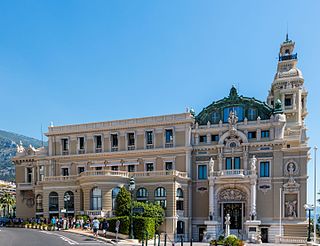 W
WThe Opéra de Monte-Carlo is an opera house, which is part of the Monte Carlo Casino located in the Principality of Monaco.
 W
WThe Palais Garnier or Opéra Garnier, is a 1,979-seat opera house at the Place de l'Opéra in the 9th arrondissement of Paris, France. It was built for the Paris Opera from 1861 to 1875 at the behest of Emperor Napoleon III. Initially referred to as "le nouvel Opéra de Paris", it soon became known as the Palais Garnier, "in acknowledgment of its extraordinary opulence" and the architect Charles Garnier's plans and designs, which are representative of the Napoleon III style. It was the primary theatre of the Paris Opera and its associated Paris Opera Ballet until 1989, when a new opera house, the Opéra Bastille, opened at the Place de la Bastille. The company now uses the Palais Garnier mainly for ballet. The theatre has been a monument historique of France since 1923.
 W
WThe Palais Wilson in Geneva, Switzerland, is the current headquarters of the Office of the United Nations High Commissioner for Human Rights. It was also the headquarters of the League of Nations from 1 November 1920 until that body moved its premises to the Palais des Nations on 17 February 1936, which was constructed between 1929 and 1938, also in Geneva. In 1924, the building was named after U.S. President Woodrow Wilson, who was instrumental to the foundation of the League of Nations. The treaty bodies also hold their sessions in the Palais Wilson. In 1932, a glass annex was built to host the 1932 Conference on Disarmament. The Secretariat of the International Bureau of Education occupied the building from 1937-1984. The annex was destroyed in a fire in 1987.
 W
WDr Henry Pollen's House is a historic building in Wellington, New Zealand. The house was built in 1902 for Dr Henry Pollen as a residence and surgery. It was designed by William Turnbull. It was originally located at 12 Boulcott Street but was moved to the corner of Boulcott Street and Willis Street in 1988 to make room for the Majestic Centre. It is now home to a restaurant, The General Practitioner.
 W
WThe Santiago Museum of Contemporary Art is located in Santiago, Chile. It is one of the city's major museums, created in 1947, and is run by the University of Chile Faculty of Arts. Since 2005, the museum has had two separate sites: MAC Parque Forestal and MAC Quinta Normal Park.
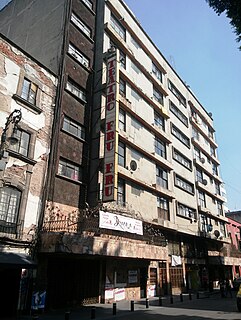 W
WThe Teatro Fru Fru is a theater in Mexico City. It was inaugurated on January 1, 1899 under the name Teatro Renacimiento. In 1973 it was re-inaugurated with its current name. It is located at number 24 in the Donceles Street, in the Centro Histórico de la Ciudad de México
 W
WTring Park Mansion or Mansion House, Tring Park, is a large country house in Tring, Hertfordshire. The house is known in Tring as 'The Mansion'. The house, as "Tring Park", was used, and from 1872 owned, by members of the Rothschild family from 1838 to 1945.